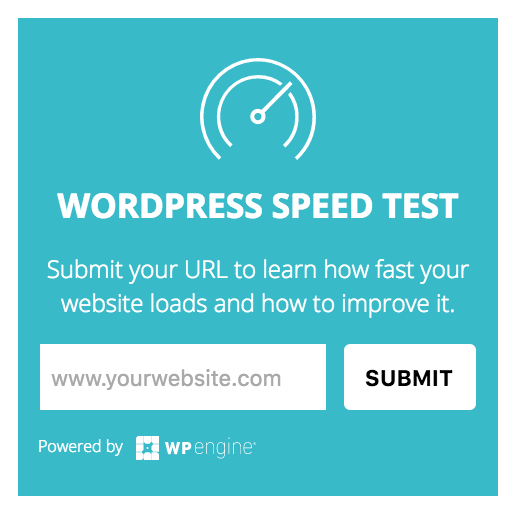Mobile Page Speed Now Matters

Last week Google announced that it’s using mobile page speed as a ranking factor for mobile search results. Outside of the obvious reason that it’s 2018 and your website needs to be responsive (mobile friendly), it should also load fast for searchers.
In 2016 I wrote a series of blog posts on everything page speed. I did some because Google was using it as ranking factor and let’s be honest, your customers come first, not Google. But to achieve higher search rankings, you have to think of Google and their requirements. If you are interested in higher mobile search rankings, you should read my post on rankings factors for voice search.
The page speed series of blog posts was geared towards desktops versions of websites and not mobile ones. This post will outline a few ways to improve the page speed of the responsive version of your website.
Before I list those reasons, test your responsive websites load speed. I have had some issues with that site but WebPageTest is also a great resource. Be sure to select an option beside “Test Location” that is either “Android Devices – Dulles, VA” or “Apple Devices – Dulles, VA” for mobile page speed tests.
How To Improve Mobile Page Speed
As online shopping and browsing becomes more and more popular, people use just about every device to participate, often including their cell phones. In our fast paced world, online browsers are impatient and may not use your website if it does not perform quickly, especially on their mobile phone. If you run a business or organization that experiences peak user times or “busy seasons”, having a fast mobile web page is even more critical in these times when more people will be using the page.
Experts say that three seconds is the maximum time that someone expects to wait for a mobile web page. Anything over that time may cause your clients to open competitor sites, spend less time on your page, and have a more negative image of your brand. So, how do you get that mobile page speed below three seconds and keep it there? Here are seven tips:
Look At Server Response Time
The server is a key element in mobile page speed, and the longer it waits to respond to requests from the browser, the longer your page viewer will wait to see the content on your page. The time your server takes to respond is called the “waiting time” or “time to first byte”, and experts recommend this to be no longer than 200 milliseconds after a request is made. The best ways to speed up this time are to improve your web server software or configuration (through coding), enhance CPU and memory resources through improving the web hosting service, or reduce the resources that your web pages use.
Avoid Redirects!
We have all experienced redirects. These are the automatic instructions that move a web page viewer to another location without them having to click anything. The most common type of redirect, a 301, moves visitors from an outdated webpage to a newly designed page. Redirects take up time, so if you do not need to use them, remove them from your web pages. Often redirects are even slower on mobile networks as they are less reliable than a desktop computer network connection. The best way to start is by using tools such as a redirect mapper to see how many redirects your web page contains.
Measure Round-Trip Times
The round trip time of data is the amount of time it takes to be both transmitted from your device to the target destination and returned back to your device. While this interval depends on many factors such as the connection source, physical distance, traffic amount, etc, it is important to regularly measure the round trip time in order to get a clear sense of average times for your page. The longer the round trip time is, again the longer your page viewer will have to wait. One of the best ways to reduce this time is to combine scripts in order to avoid repeated trips.
Load Upper Half Content First
On a mobile device, it makes sense to load the content at the top of the page first, as this is what the viewer will see first. If you code your pages so the server sends data to show the upper content first, your lower content will have slightly more time to load as the viewer browses the already loaded upper half. This gives the perception that the web page has fully loaded faster even if some of the lower content has not appeared yet.
Place JavaScript At The Bottom Of HTML Files
JavaScript is an important aspect of a web page for interactivity purposes, but it can be a big problem for load times as it does not allow parallel downloads. When this content is loaded, other downloads will not happen. To make your main page content load slightly faster, it is a good idea to put the JavaScript scripts at the bottom of the page. Another way to slightly improve speed is putting the Cascading Style Sheets at the top of the programming file. These sheets show how elements will be displayed, so it gives the appearance that the webpage is actually loading faster as the layout will be loaded first.
Optimize CSS And JS
The more data on your page, the longer the page will take to load. This is why it is so important to optimize and minimize everything on your page, but most of all Cascading Style Sheets and JavaScript files. This includes getting rid of redundant or irrelevant data that has no effect on your page function, but will improve the speed.
Compress Files
This tip will both increase and decrease load time. When data is compressed, it must be decompressed in order to be displayed. This means that the data will transmit faster, but the extra decompression step may take up more time. The trade off here is usually worth it, but this is something to keep in mind as it reduces page weight which is especially important for mobile pages.
Try out the 7 tips above to see your mobile page speeds go from over three seconds to under in the blink of an eye! If you need additional help optimizing your web pages, contact us today.

